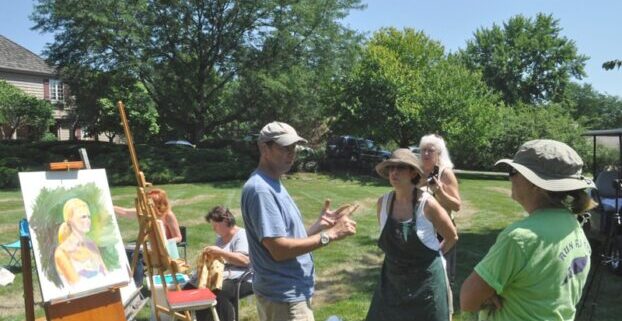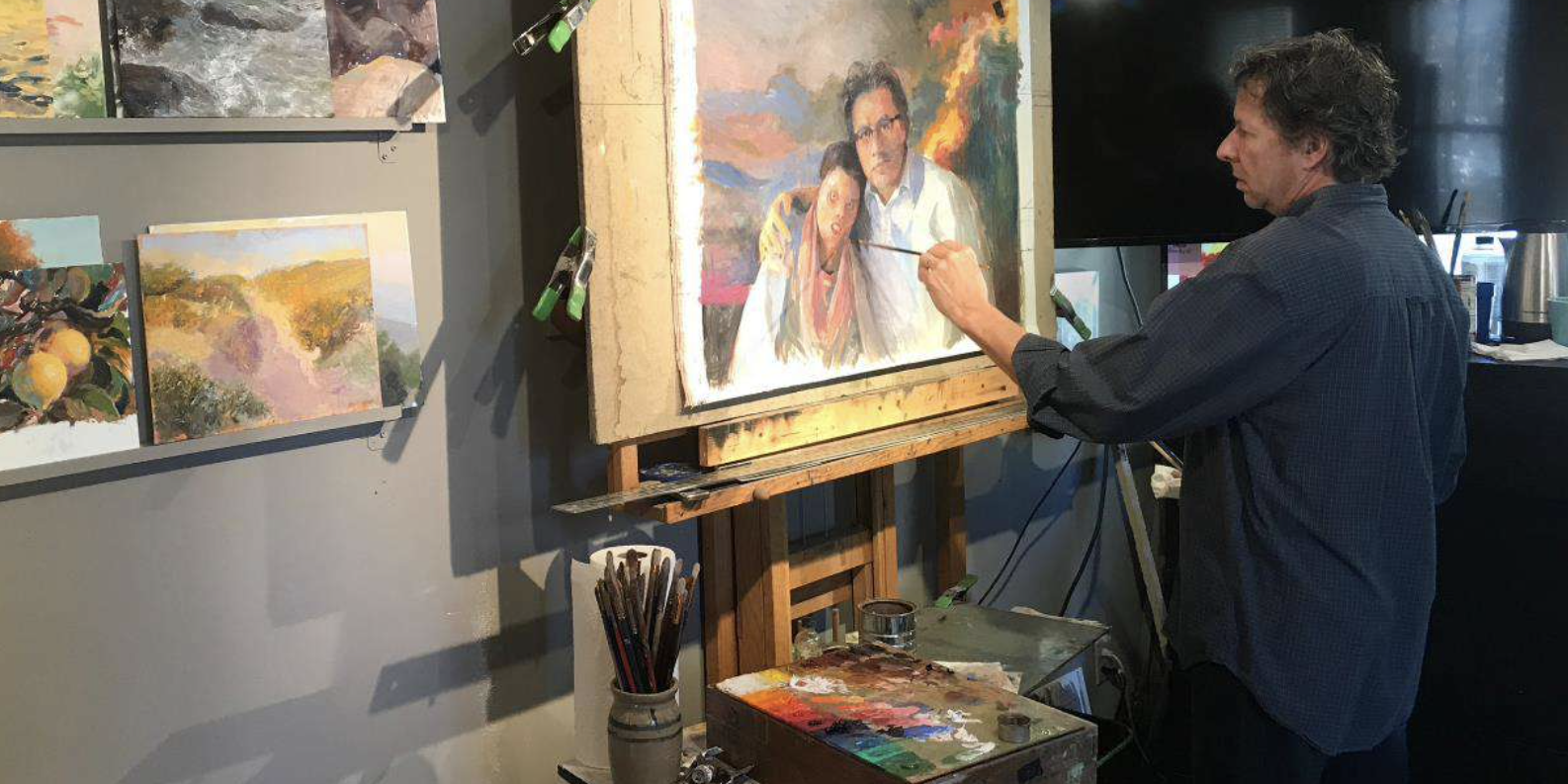It’s a gorgeous June day. Cotton floats in the blue sky. A gentle breeze wafts the sun’s warmth among the dozen artists painting the park scene before us. I am the teacher, the artists are my students. Walking amongst the plein air easels scattered across the park lawn, eyeing my students leaning into their canvases, I am acutely aware that every student is in a unique place in their art journey. I may begin each session with a group lesson, but after that, the instruction is one-on-one and the teaching dynamic changes completely.
When teaching students as a group, I focus on basic principles that apply to the workshop theme. For example, if the workshop is about color, then my opening lecture is about the principles and concepts of color— what color is, how colors relate to one another, the effect of color upon a painting’s composition and the artist’s purpose for the painting.
Instructing students individually, which makes up a majority of the time spent in my workshops, the teaching dynamic shifts from general to specific, which in turn creates an entirely unique relationship between teacher and student. No longer am I speaking in generalities.
How an artist creates is as personal as how a person lives. There is no singular way to live; neither is there one way to paint. The museums are a testimony to this. Consider the breadth of styles across the ages and geographies. Even within defined periods of painting, such as the Renaissance, we see a display of styles and focuses. There is no one perfect way to respond to the world we take in.
Teaching a workshop seems to me akin to counseling. Every student is a solo case, none like the other. I remember a late-night radio show hosted by a pair of psychologists. When taking a call from a listener, the host would ask, “So, how may we help you?” I came to see that question as the perfect opening. No presuposition; only a desire to help. But it started with listening— what did the caller have on his or her mind?
When I walk up to a student’s easel, I know what I deem the painting’s biggest need. But, as I discovered, that was not often what the student was battling. They may have come to the workshop with a clear intent of overcoming a particular hurdle. Better that we address that hurdle before introducing new challenges.
Thus, I ask each student, “How may I help you?” Sometimes they don’t have an answer because they don’t have a destination in mind yet. You’re not lost if you don’t know where you’re going. If that’s the case, then I ask, “What excites you most about the scene you are painting?” Once answered, this is followed with, “Do you feel you’re conveying that excitement in this piece?” Now we have a purpose and a direction to travel.
My goal in teaching is to help students learn to ask the right questions of themselves when they’re painting on their own. The first step to asking the right question is to know where you aim to go. From there, it’s easy to ask, “Am I on track?” It’s a yes or no question. I teach students where to go next: run through the principle taught in the group session— check your values, masses, proportions, angles, colors. This checklist will unearth where you have gone askew. It is then that the student applies the how-to solutions I teach in both group and individual sessions.
Every painting should begin with a purpose. From there, the artist leans upon observation, interpretation, and the application of learned principles and practices to arrive at their purpose using yes/no questions. Am I track? If not…ask the yes/no questions and you will soon know exactly what color, value, and shape to paint where that points the painting in the right direction.






